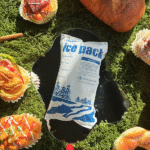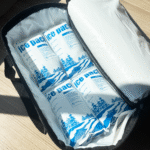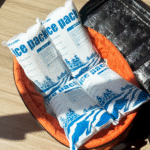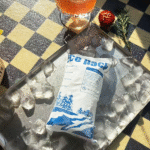Einführung:
In der heutigen schnelllebigen Logistikwelt, Sicherstellen, dass temperaturempfindliche Güter wie Arzneimittel, Essen, und Biotech-Produkte innerhalb präziser Temperaturbereiche gehalten werden, ist von entscheidender Bedeutung. Traditional dry ice is slowly being replaced by innovative solutions, wie zum Beispiel ice substitute dry ice packs, which offer several advantages. These packs are particularly important for industries requiring strict temperature control, providing an efficient and safe way to transport goods. In diesem Artikel, Wir werden die Vorteile untersuchen, Anwendungen, and trends shaping the use of ice substitute dry ice packs in 2025 und darüber hinaus.
-
How do ice substitute dry ice packs work?
-
Which industries benefit most from using these ice packs?
-
How can you choose the right ice substitute dry ice pack for your needs?
-
What are the cost implications and environmental benefits of these packs?
Wie funktionieren Eisersatz-Trockeneisbeutel??
Ice substitute dry ice packs are designed to provide effective cooling without the risks associated with traditional dry ice. These packs use Phasenwechselmaterial (PCMs) oder gel-based substances that absorb and release heat at specific temperatures. Im Gegensatz zu Trockeneis, which sublimates and creates carbon dioxide gas, ice substitute packs maintain cold temperatures through a more stable, non-hazardous process.
Core Mechanism: When the phase change material inside these packs changes state (from solid to liquid or vice versa), it absorbs or releases large amounts of energy, keeping the surrounding products at a stable temperature. This ability makes them particularly useful for transporting pharmaceuticals, Impfungen, und verderbliche Waren.
Key Components of Ice Substitute Dry Ice Packs:
-
Isolierschicht: Minimiert die Wärmeübertragung, ensuring that the cooling effect is prolonged.
-
Phase Change Core (Dry Ice Equivalent): The cooling mechanism, responsible for absorbing heat and maintaining the required temperature.
-
Schützende Außenhülle: Dauerhaft, lightweight materials that protect the contents during transit, ensuring the pack remains intact.
| Komponente | Beschreibung | Bedeutung |
|---|---|---|
| Isolierschicht | Reduces external heat transfer | Prolongs cooling effect |
| Phase Change Core | Absorbs and releases heat at specific temperatures | Maintains consistent temperature |
| Schützende Außenhülle | Leicht und langlebig | Enhances safety and ease of transport |
What Industries Benefit the Most from Ice Substitute Dry Ice Packs?
Ice substitute dry ice packs are crucial for industries that rely on temperature-sensitive products during transit. Some of the industries that benefit the most include:
Pharmazeutika:
-
These packs are essential for transporting drugs, Impfungen, und Biologika, which require precise temperature control to remain effective.
Essen und Getränk:
-
Ensuring freshness of perishable goods such as meats, Molkerei, and frozen foods is vital. These packs ensure that food products stay fresh from the manufacturer to the end customer.
Biotechnologie:
-
Many biotech products, like biological samples, need to be transported at strict temperature ranges to maintain their integrity. Ice substitute dry ice packs help preserve these materials.
How to Choose the Right Ice Substitute Dry Ice Pack for Your Shipment?
Choosing the right ice substitute dry ice pack involves understanding the nature of the goods being shipped, der erforderliche Temperaturbereich, und die Dauer der Sendung. Here are some key considerations when selecting the right pack:
1. Temperaturanforderungen:
-
Ice substitute packs can be tailored to maintain specific temperature ranges, Normalerweise dazwischen 2°C und -20°C, depending on the material inside.
2. Kühldauer:
-
Consider how long the shipment will take. Für längere Dauer, you may need larger or more robust packs that offer longer cooling durations, Typischerweise 12 Zu 48 Std..
3. Größe und Passform:
-
The size and shape of the pack should fit within the designated shipping containers, ensuring optimal performance and no space wastage.
Tipp: Always run a test before full-scale use to ensure the chosen pack meets your cooling needs under real-world conditions.
Cost Implications and Environmental Benefits of Using Ice Substitute Dry Ice Packs
While the upfront cost of ice substitute dry ice packs may be higher than traditional ice, their long-term savings and environmental benefits make them a worthwhile investment.
Cost Factors:
-
Reduzierter Verderb: Durch die Aufrechterhaltung konstanter Temperaturen, these packs help reduce product spoilage, saving businesses money by minimizing waste.
-
Bessere Compliance: Industries with strict temperature control regulations, wie Arzneimittel, can avoid costly penalties by using these packs to stay compliant.
-
Verbesserte Kundenzufriedenheit: By ensuring that products arrive in optimal condition, businesses can enhance customer loyalty and build a reputation for reliability.
| Kostenfaktor | Nutzen | Impact on Your Business |
|---|---|---|
| Reduzierter Verderb | Weniger Abfall, fewer damaged goods | Höhere Gewinnmargen |
| Compliance-Kosten | Avoid regulatory fines | Maintains reputation and trust |
| Kundenzufriedenheit | Hochwertig, safe delivery | Erhöhte Kundenbindung |
Umweltvorteile:
-
Umweltfreundliches Design: Many ice substitute dry ice packs are wiederverwendbar and made from Biologisch abbaubare Materialien, making them a nachhaltig Auswahl.
-
Geringerer CO2-Fußabdruck: Im Gegensatz zu Trockeneis, which produces CO₂ emissions when it sublimates, these packs help businesses meet Nachhaltigkeitsziele while still offering effective temperature control.
2025 Trends in Ice Substitute Dry Ice Packs
Innovation in Materials:
Die Nachfrage nach umweltfreundlich solutions in cold chain logistics is pushing manufacturers to develop nachhaltige Materialien for ice substitute dry ice packs. These materials improve thermal insulation while minimizing environmental impact, making them an attractive choice for businesses looking to reduce their carbon footprint.
Integration intelligenter Technologie:
Advances in technology are also being integrated into these packs. Intelligente Sensoren are now being used in some packs to provide Echtzeit-Temperaturüberwachung, alerting users if temperatures deviate from the desired range. This helps reduce the risk of spoilage and improves shipment reliability.
Häufig gestellte Fragen
Q1: How long do ice substitute dry ice packs last?
Typischerweise, ice substitute dry ice packs last 12 Zu 48 Std., abhängig von der Packungsgröße und den Umgebungsbedingungen.
Q2: Can I use ice substitute dry ice packs for shipping food?
Ja, these packs are ideal for shipping temperaturempfindliche Lebensmittel, such as frozen items, Molkerei, und Fleisch, ensuring that they remain fresh during transit.
Q3: What makes ice substitute dry ice packs better than traditional dry ice?
Ice substitute packs offer longer-lasting cold, non-hazardous handling, Und geringere Umweltauswirkungen, making them a superior alternative to traditional dry ice.
Schlussfolgerung und Empfehlungen
Ice substitute dry ice packs are transforming cold chain logistics by providing a safer, effizienter, and cost-effective way to transport temperature-sensitive products. By selecting the right pack based on your shipment’s requirements, Sie können die Effizienz verbessern, Verderb verringern, and enhance compliance.
Nächste Schritte:
Evaluate your current cold chain logistics processes and consider integrating ice substitute dry ice packs into your operations for improved product safety and operational efficiency.
Über Tempk
Bei Tempk, we specialize in offering industry-leading cold chain solutions. Our ice substitute dry ice packs are designed for maximum performance Und Nachhaltigkeit, ensuring your temperature-sensitive goods stay safe during transit. We offer tailored solutions to meet your logistics needs with a focus on Innovation Und Zuverlässigkeit.
Wenden Sie sich noch heute an Tempk to learn more about how our ice substitute dry ice packs can enhance your shipping operations.























